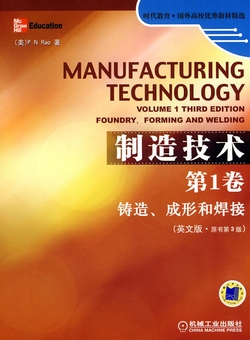英语写作教学研究:同伴反馈对英语学习者写作能力的影响
定价:¥28.00
作者: 王松
出版时间:2014-09
出版社:贵州大学出版社
- 贵州大学出版社
- 9787811267228
- 174375
- 2014-09
- H315
内容简介
目录
CHAPTER 1 INTRODUCTION
1.1 Background
1.2 The Statement of the Problem
1.3 The Preliminary Study and Purposes of the Present Study
1.3.1 The Preliminary Study
1.3.2 The Purposes of the Present Study
1.4 Research Questions
1.5 The Significance of the Study
1.6 Definition of Terms
CHAPTER 2 LITERATURE REVIEW
2.1 Introduction
2.2 Nature of Writing
2.3 Writing Process: The Theories
2.3.1 Characteristics of the Writing Process
2.3.2 Approaches to Writing Process
2.3.3 Three Models of Writing Process
2.4 Revision
2.5 Peer Response
2.5.1 Definition of Peer Response
2.5.2 Forms of Peer Response Activity
2.5.3 Face-to-face Peer Response and Second Language Writing
2.5.4 Merits and Demerits of Face-to-face Peer Response
2.5.5 The Studies on Traditional Face-to-face Peer Response
2.5.6 Implications for the Present Study
2.6 Electronic (Computer-Mediated Communication) Peer Response
2.6.1 What is Computer-Mediated Communication?
2.6.2 Computer-Mediated Peer Response
2.6.3 The Empirical Studies on Computer-Mediated Peer Response
2.6.4 Implications for the Present Study
2.7 Summary
CHAPTER 3 PILOT STUDY
3.1 Research Questions
3.2 Participants
3.3 Instruments
3.4 Procedures
3.5 Procedures for Reliable Scoring
3.6 Data Analysis
3.6.1 Quantitative Analysis
3.6.2 Qualitative Analysis
3.7 Implications for the Main Study
CHAPTER 4 RESEARCH DESIGN AND METHODOLOGY
4.1 Nature of Research
4.2 Research Methods
4.3 Research Design
4.3.1 Population and Participants
4.3.2 The Pedagogical Context
4.3.3 Procedure
4.3.4 Assessment
4.3.5 The Post-test
4.3.6 Oral Interview
4.3.7 Written Questionnaire
4.3.8 Data Collection
4.3.9 Data Analysis
4.4 Summary
CHAFFER 5 RESEARCH FINDINGS AND DISCUSSION
5.1 Student Participants
5.2 Research Findings
5.2.1 Research Question 1
5.2.2 Research Question 2
5.2.3 Research Question 3
5.2.4 Research Question 4
5.2.5 Research Question 5
5.3 Summary
CHAPTER 6 CONCLUSIONS, LIMITATIONS AND IMPLICATIONS
6.1 Conclusions
6.1.1 Answers to Research Question 1
6.1.2 Answers to Research Question 2
6.1.3 Answers to Research Question 3
6.1.4 Answers to Research Question 4
6.1.5 Answers to Research Question 5
6.2 Limitations
6.3 Implications
REFERENCES
APPENDIX
1.1 Background
1.2 The Statement of the Problem
1.3 The Preliminary Study and Purposes of the Present Study
1.3.1 The Preliminary Study
1.3.2 The Purposes of the Present Study
1.4 Research Questions
1.5 The Significance of the Study
1.6 Definition of Terms
CHAPTER 2 LITERATURE REVIEW
2.1 Introduction
2.2 Nature of Writing
2.3 Writing Process: The Theories
2.3.1 Characteristics of the Writing Process
2.3.2 Approaches to Writing Process
2.3.3 Three Models of Writing Process
2.4 Revision
2.5 Peer Response
2.5.1 Definition of Peer Response
2.5.2 Forms of Peer Response Activity
2.5.3 Face-to-face Peer Response and Second Language Writing
2.5.4 Merits and Demerits of Face-to-face Peer Response
2.5.5 The Studies on Traditional Face-to-face Peer Response
2.5.6 Implications for the Present Study
2.6 Electronic (Computer-Mediated Communication) Peer Response
2.6.1 What is Computer-Mediated Communication?
2.6.2 Computer-Mediated Peer Response
2.6.3 The Empirical Studies on Computer-Mediated Peer Response
2.6.4 Implications for the Present Study
2.7 Summary
CHAPTER 3 PILOT STUDY
3.1 Research Questions
3.2 Participants
3.3 Instruments
3.4 Procedures
3.5 Procedures for Reliable Scoring
3.6 Data Analysis
3.6.1 Quantitative Analysis
3.6.2 Qualitative Analysis
3.7 Implications for the Main Study
CHAPTER 4 RESEARCH DESIGN AND METHODOLOGY
4.1 Nature of Research
4.2 Research Methods
4.3 Research Design
4.3.1 Population and Participants
4.3.2 The Pedagogical Context
4.3.3 Procedure
4.3.4 Assessment
4.3.5 The Post-test
4.3.6 Oral Interview
4.3.7 Written Questionnaire
4.3.8 Data Collection
4.3.9 Data Analysis
4.4 Summary
CHAFFER 5 RESEARCH FINDINGS AND DISCUSSION
5.1 Student Participants
5.2 Research Findings
5.2.1 Research Question 1
5.2.2 Research Question 2
5.2.3 Research Question 3
5.2.4 Research Question 4
5.2.5 Research Question 5
5.3 Summary
CHAPTER 6 CONCLUSIONS, LIMITATIONS AND IMPLICATIONS
6.1 Conclusions
6.1.1 Answers to Research Question 1
6.1.2 Answers to Research Question 2
6.1.3 Answers to Research Question 3
6.1.4 Answers to Research Question 4
6.1.5 Answers to Research Question 5
6.2 Limitations
6.3 Implications
REFERENCES
APPENDIX



